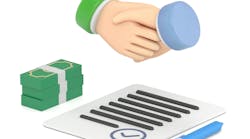by Dennis J. Fasbinder, DDS, ABGD
For more on this topic, go to www.dentaleconomics.com and search using the following key words: CAD/CAM, digital chairside systems, digital technology systems, digital impressions, veneers, inlays, onlays, crowns.
Digital dental technology systems are offering new clinical work flows. The new systems avoid the use of traditional impression materials while creating opportunities for the innovative use of the data recorded with a digital impression. Most discussions of these systems focus on the process of restoration design and fabrication.
But what is the actual outcome of these innovative work flows? What materials and restorations can be delivered with these systems? These are central questions many clinicians are asking as they consider implementing digital systems in their practices.
Digital systems that are currently available for the dental office are in one of two general categories. Digital impression systems – including Cadent iTero™, 3M™ ESPE™ Lava™ Chairside Oral Scanner (COS), and Sirona CEREC Connect – digitally record the tooth preparations and adjacent teeth in the quadrant or arch, as well as the opposing dentition and centric occlusion bite registration. The recorded data is electronically transmitted to the dental laboratory for use in fabricating the desired restoration.
Digital chairside systems – including Sirona CEREC® Acquisition Center (AC) and D4D Technologies E4D Dentist System – also record digital impressions; however, the recorded data is used within the dental office to design, mill, and deliver the final restoration in a single appointment.
The full range of single-tooth restorations is possible with both digital chairside systems and digital impression systems. This includes veneers, inlays, onlays, and crowns. Chairside systems’ primary work flow is to deliver the final restoration in a single appointment.
Any material considered for use in these systems will optimally be capable of fabrication in a short enough time period to allow the final restoration to be delivered while the patient is still in the office. The material should also require a minimal amount of time for post-milling processing to complement the chairside delivery. Digital impression systems can take advantage of any laboratory fabrication process since the restorations are fabricated in the dental laboratory.
Manufacturers fabricate ceramic or composite materials in a solid block form for digital chairside systems. The blocks are compatible with the specifics of the two available in-office milling chambers. Both commercial in-office milling systems employ a wet grinding process for shaping or milling the restoration from preformed blocks.
Four glass-containing ceramic materials are marketed for chairside application. Vident VITA Mark II and Sirona Blocs are fine-grained, feldspathic porcelain blocks. Ivoclar IPS Empress® CAD and 3M™ ESPE™ Paradigm™ C are 30% to 40% leucite-reinforced porcelain blocks.
All four ceramics have very good translucency and moderate flexural strength (140 to 175 MPa). The presence of a glass component in the ceramic allows them to be etched and adhesively bonded to the tooth, which is critical to long-term retention and durability of the restoration.
These materials are used to fabricate veneers, inlays, onlays, and crowns that can be delivered in a single appointment. They can be either polished or characterized and glazed prior to adhesive bonding to the tooth preparation. In general, the higher the esthetic demand placed on the restoration, the more likely the additional time will be invested to characterize and glaze the restoration.
3M™ ESPE™ Paradigm™ MZ100 represents an alternative material from the more popular ceramic materials. Ceramics require time and effort for intraoral adjustment and polishing. The composite resin chemistry of Paradigm MZ100 makes it easier to adjust and polish.
It is 85% filled by weight with an average zirconia-silica filler particle size of 0.6 microns that has demonstrated very good clinical wear over 10 years. The clinical technique for direct composite restorations has been refined to overcome the limitations of composite polymerization shrinkage, difficulty in developing acceptable proximal contacts, and long-term occlusal wear.
As the efficiency and ease of use has improved with chairside CAD/CAM systems, it is now feasible to overcome the limitations of direct composite materials with CAD/CAM composite inlays and onlays. It has also been used in crown applications as transitional restorations to solve a number of clinical situations during the delivery of long-term treatment plans.
Ivoclar IPS e.max CAD was introduced in 2006 as a lithium disilicate CAD/CAM material. It was initially developed as a substructure material that offered greater translucency compared to other high-strength ceramic core materials.
It has gained popularity for use in chairside CAD/CAM systems due to its enhanced flexural strength (350-400 MPa). The increase in strength affords the choice to either etch and adhesively bond the material to the tooth or use a conventional cementation technique.
Chairside systems can image and design fixed partial dentures (FPDs); however, there is no current material available that is advocated for chairside FPDs. Ivoclar Telio CAD and Vident VITA CAD-Temp are acrylic temporary materials that can be used to fabricate temporary crowns and FPDs chairside. The CAD/CAM process avoids any polymerization shrinkage associated with conventional self-cure or VLC acrylics. These materials are recommended for approximately 12 months of clinical service.
Digital impression systems expand the material and restoration options available with chairside systems. The recorded digital impression data is transmitted to the dental laboratory for processing of the final restoration. The data can be utilized in two separate work flows.
One way is to use the digital impression to process articulated models. The iTero manufacturing center creates polyurethane models via a subtractive CAD/CAM milling process. Manufacturing centers for Lava COS and CEREC Connect utilize an additive resin printing process known as stereolithography (SLA) to fabricate articulated models. Dental laboratories can use the models to fabricate any type of restoration using conventional laboratory techniques.
The second work flow for the digital impression data is to input it directly to a computer-assisted design (CAD) program. The CAD program can be used for computer graphic design of substructures or full-contour restorations. Once the substructures or full-contour restorations are milled and processed, they can be refined and finished using the articulated models.
Cast metal restorations or substructures can be waxed on the processed digital models, invested, and cast, similar to what would be done with a stone model. The articulated models support the finishing process of full-contour cast metal restorations, as well as the porcelain veneering of metal substructures for PFM crowns.
An example of laboratories combining traditional and CAD/CAM processes to maximum advantage is for CAD/CAM gold or PFM crowns. The wax-investing casting process for metal substructures and crowns is a dependable technique for well-fitting restorations.
Subtractive milling of gold has not been considered a cost-effective technique due to the significant loss of the gold as the shape of the restoration is milled from a block of gold. However, milling or printing of wax shapes from computer-assisted designing is effective. It also does not require any waxing skill to create the wax shape since the volume shape of the casting is designed on a computer. Once the wax shape has been milled or printed, it can be invested and cast for final restoration processing.
Probably the most common restorations associated with digital impression systems are zirconia crowns and FPDs. The simultaneous data work flow of model manufacturing and substructure design and milling allows laboratories to have the substructure milled and ready for surface veneering by the time the model is returned to the laboratory (generally within three days of the upload of the digital impression data).
The surface veneer is processed by hand to complete the restoration on the model. To improve the workflow as well as the surface strength of the hand-processed zirconia crown and FPDs, several companies have introduced a total CAD/CAM workflow.
The 3M™ ESPE™ Lava™ Digital Veneering System and Ivoclar IPS e.max® CAD-ON technique are similar in that the surface veneer of the zirconia substructure is designed and milled as a monolithic layer that is fused with porcelain to the milled zirconia substructure.
The Vident VITA Rapid Layer Technology has a similar total CAD/CAM design and mill process for the zirconia substructure and monolithic veneer layer, but differs in that the two milled structures are bonded together with resin cement. The monolithic veneer layer offers a more efficient work flow for production as well as a more homogenous, milled surface to the restoration.
Total CAD design of the bilayer restoration also provides the potential for optimum design of the substructure support of the veneer layer. Long-term clinical research on these new total CAD/CAM bilayer restorations will provide evidence about their clinical efficacy.
Digital dental technology is continuing to challenge the usual work flows and fabrication techniques for dental restorations. As with any new development, it is easy to focus on the improvements in the process of restoration fabrication; however, there is considerable evidence developing that indicates the outcome is also expanding and improving.
Dennis J. Fasbinder, DDS, ABGD, is a clinical professor at the University of Michigan, where he also maintains a part-time private practice. He directs the Computerized Dentistry unit that is dedicated to research and education on CAD/CAM dentistry. He is also a cofounder of the Fully Integrated Practice online education portal for CAD/CAM technology. Reach Dr. Fasbinder by e-mail at [email protected].


